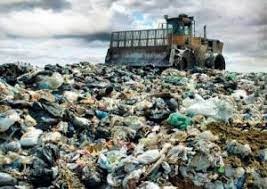| Mains GS Paper iii –Environment |
Solid waste management remains one of the major environmental challenges in Indian cities. Most urban local bodies (ULBs) have legacy dumpsites where waste has been accumulating for decades, leading to severe soil, water, and air pollution.
To address this, the Ministry of Housing and Urban Affairs (MoHUA) has launched the Dumpsite Remediation Accelerator Program (DRAP) — a year-long targeted initiative aimed at achieving the “Zero Dumpsite India” goal by September 2026.

Background: Swachh Bharat Mission – Urban (SBM-U) 2.0
- Launched: 1 October 2021
- Goal: 100% Garbage-Free Cities
- Key Objectives:
- Scientific reclamation/remediation of all legacy dumpsites
- Segregation, recycling, and reuse of solid waste
- Development of green zones from reclaimed land
What is DRAP?
The Dumpsite Remediation Accelerator Program (DRAP) is an accelerator initiative under SBM-U 2.0 designed to fast-track the scientific remediation of India’s legacy dumpsites.
Objectives
- Prioritize high-impact sites
- Dispose of around 8.8 crore metric tonnes of legacy waste
- Transform old dumpsites into green zones, parks, or community spaces
Implementing Ministry
- Ministry of Housing and Urban Affairs (MoHUA)
Eligibility
- All states and union territories with ongoing legacy waste projects
- Sites with over 45,000 metric tonnes of waste are prioritized
- No minimum limit for Union Territories and Northeastern states
Status of Dumpsites in India
|
Parameter
|
Data
|
|
Total dumpsites
|
1,428
|
|
Fully remediated
|
1,048
|
|
Work in progress
|
380
|
|
Focus sites
|
214 sites in 202 ULBs
|
|
Total legacy waste
|
8.8 crore MT
|
What is Legacy Waste?
Legacy waste refers to old municipal solid waste that has accumulated in landfills or dumpsites over the years and has undergone partial or complete decomposition.
It includes:
- Biodegradable waste
- Plastics, construction debris, ash, dust, etc.
Major Environmental Risks
- Leachate:
- Contaminated liquid that seeps through the waste
- Pollutes both surface and groundwater
- Landfill Gas:
- Produced from the decomposition of waste (mainly methane (CH₄) and carbon dioxide (CO₂))
- Contributes to greenhouse gas emissions and potential fire/explosion hazards
Key Technologies for Dumpsite Management
|
Technology
|
Description
|
Benefits
|
Limitations
|
|
Biocapping
|
Covering the dumpsite with a soil/biological layer and converting it into a green zone
|
Controls leachate and gas emissions; stabilizes land
|
Requires maintenance for 10–15 years
|
|
Biomining
|
Using microorganisms to extract usable materials (e.g., RDF, metals) from waste
|
Reduces waste volume; reclaims land
|
Requires technical expertise and close monitoring
|
Financial and Implementation Aspects
- Central financial support: ₹550 per tonne of waste
- States must prepare Micro Action Plans
- Real-time monitoring through the DRAP Portal
- Implementation Model: 5-P Framework
- Political Will
- Public Finance
- Public Advocacy
- Project Management
- Partnerships (CSR + Private Sector)
Benefits of DRAP
- Significant reduction in landfill and leachate pollution
- Reclamation of valuable urban land for parks, housing, or community spaces
- Reduction in methane emissions, supporting climate change mitigation
- Employment generation (for waste pickers and recycling industries)
- Improvement in cities’ Garbage-Free rankings
Challenges
- Lack of technical expertise and advanced machinery
- Limited financial and managerial capacity of local bodies
- Continuous dumping of fresh waste at the same sites
- Low private sector participation
- Long-term monitoring and maintenance challenges



